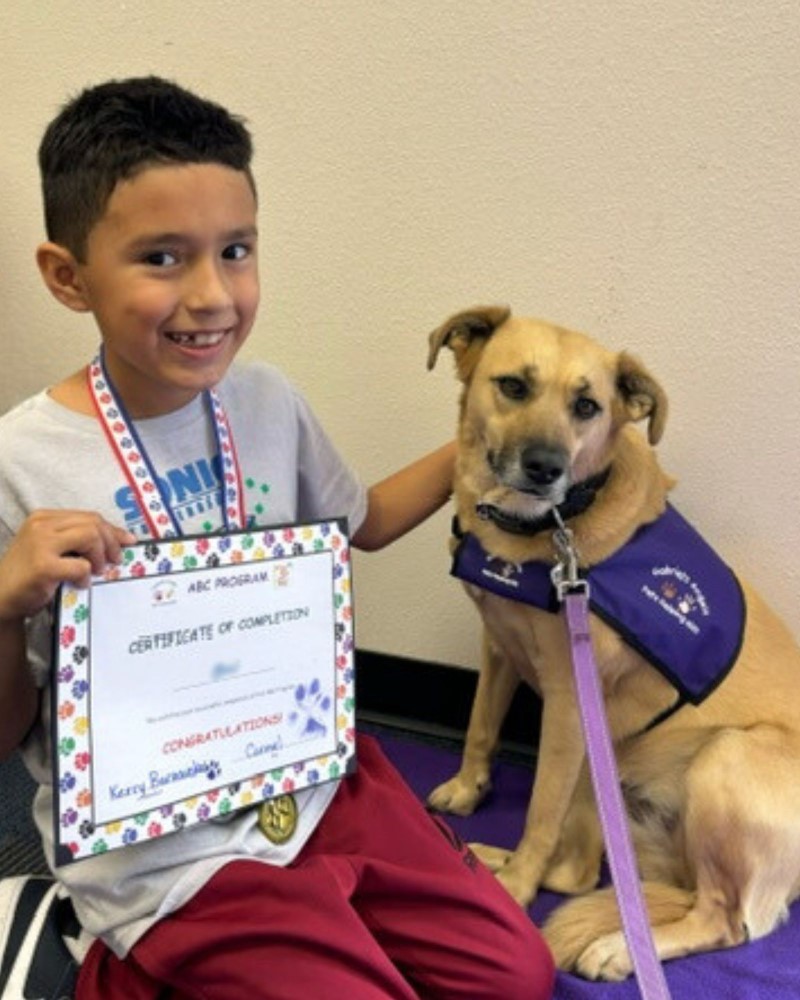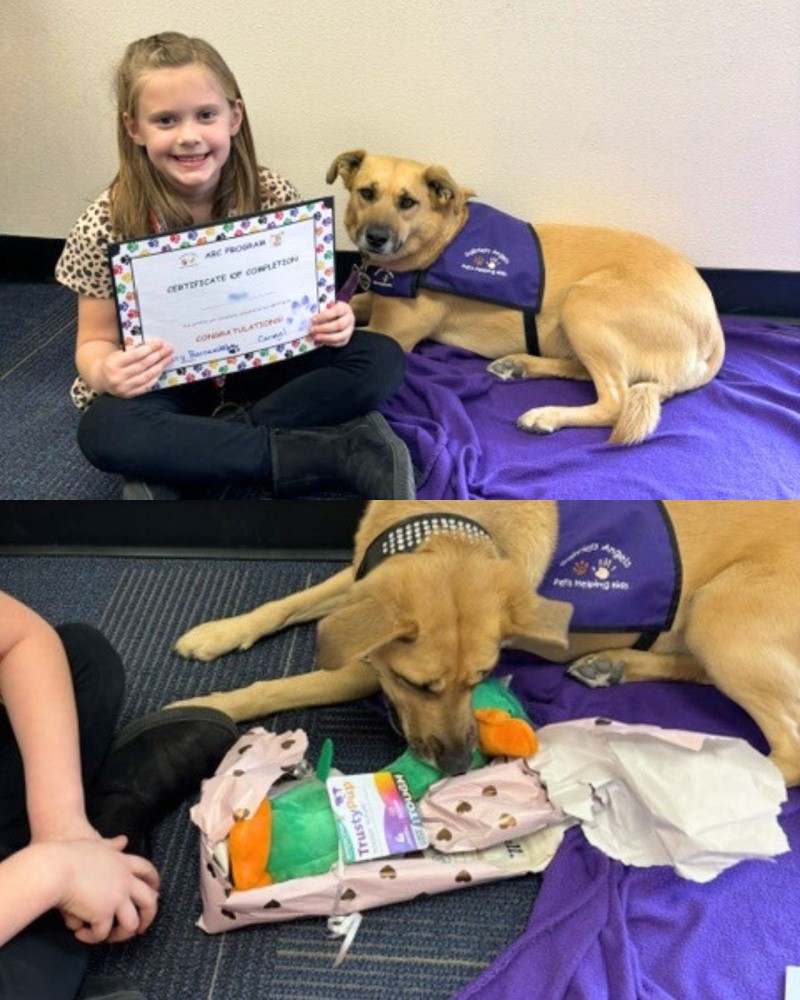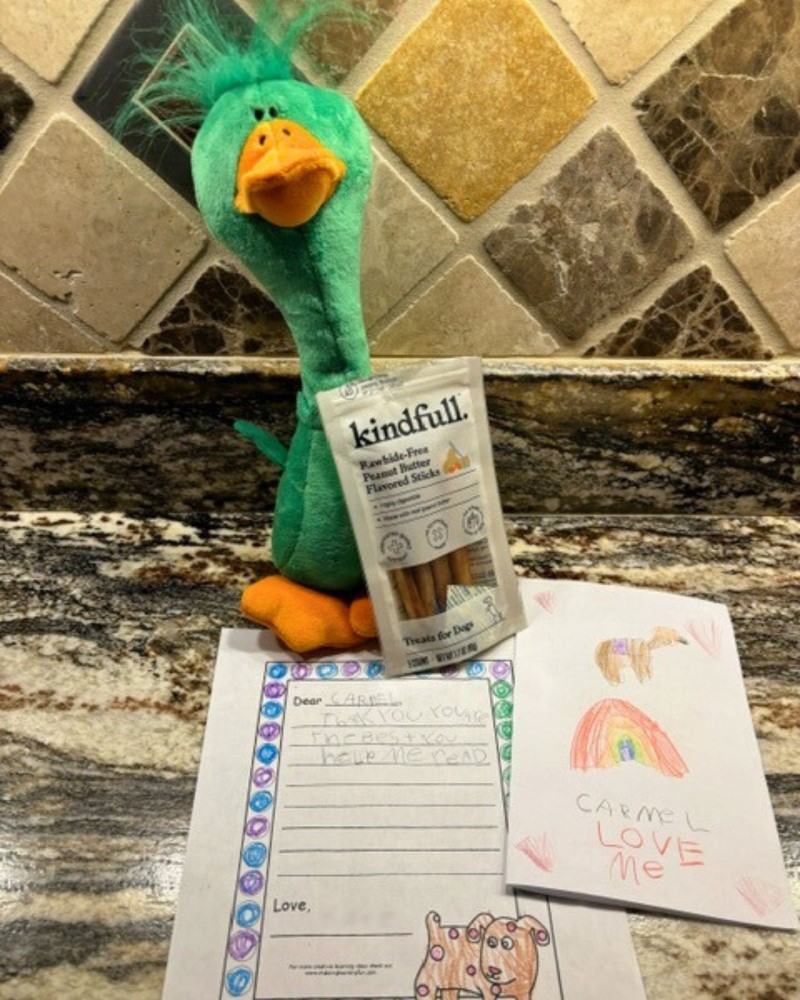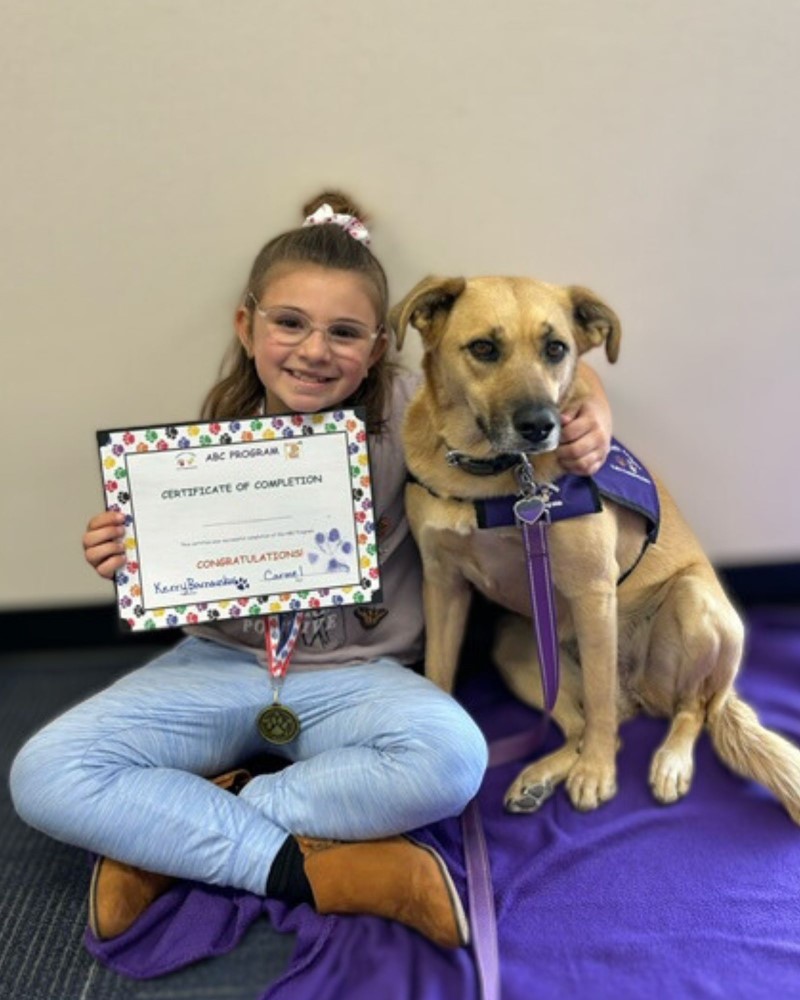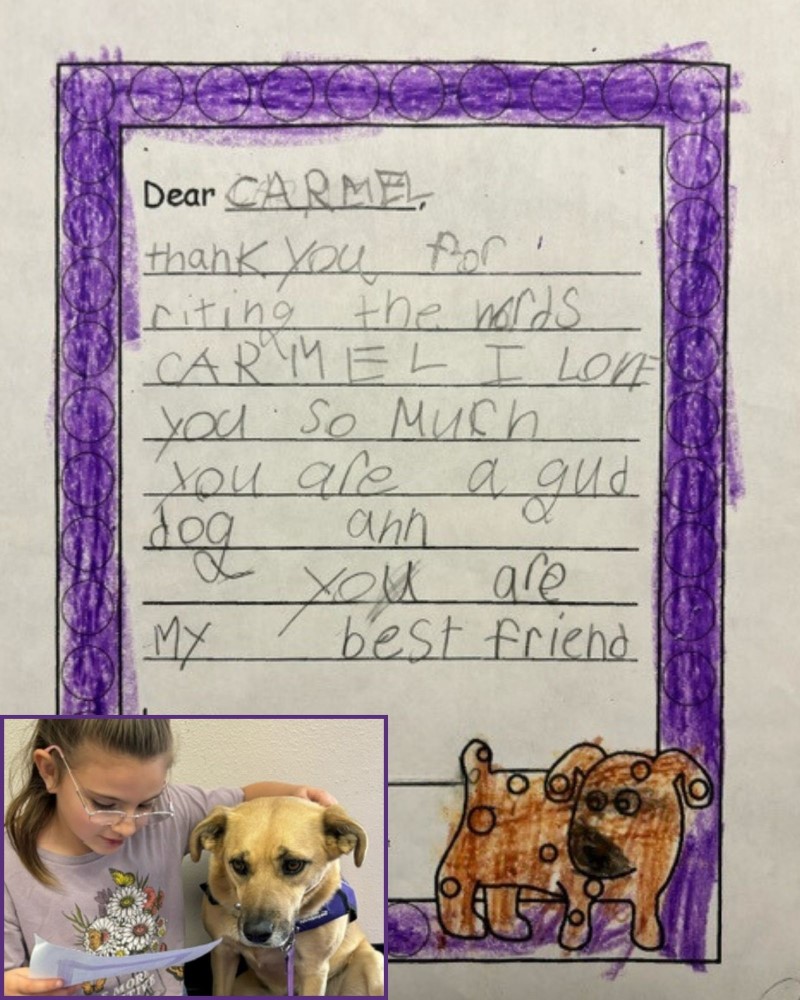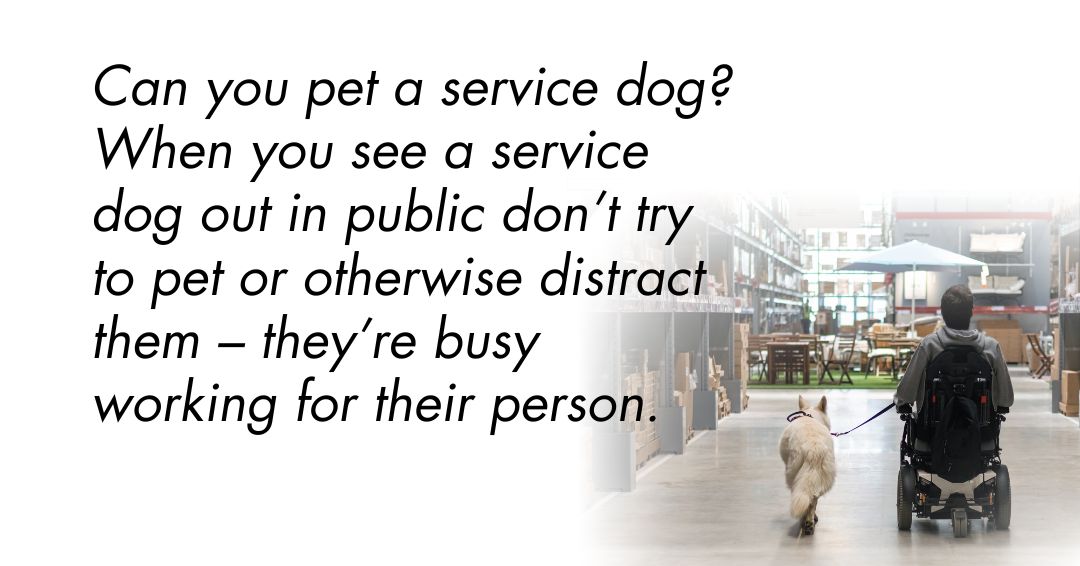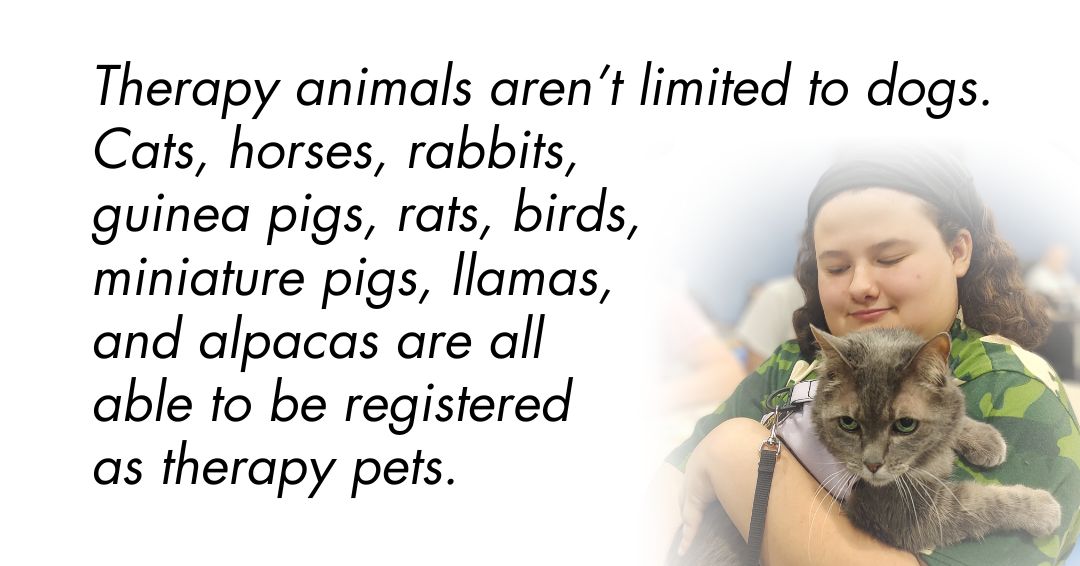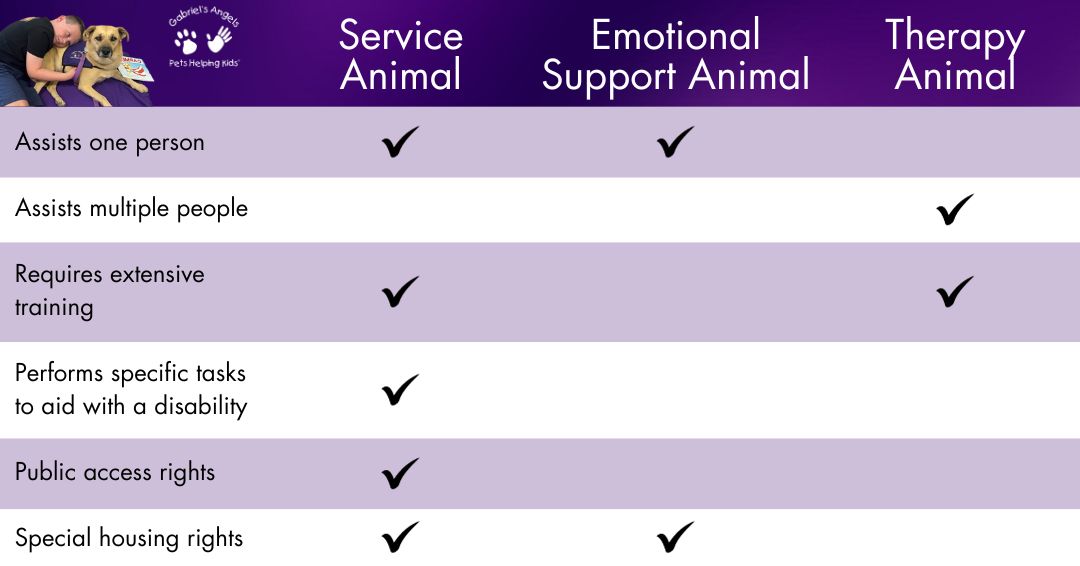Like a Cloud: A Therapy Dog Poem by Cynthia
Like a Cloud: A Therapy Dog Poem by Cynthia
Sometimes, the impact of a therapy dog is best captured not in numbers, but in poetry.
Cynthia, a thoughtful young girl in one of our Paws for Resilience groups, recently surprised her volunteers, Joanne and Carly, with something truly special: a heartfelt poem about York, the big Golden Retriever who visits her each week. York isn’t just a therapy dog to Cynthia – he’s a source of comfort, connection, and joy. Her poem is a beautiful glimpse into the powerful bond that can form between a child and a compassionate animal:

York makes me feel like a cloud
He makes me feel like nothing can turn me downAnd he is like a big colorful cloud
He is the most cutest thing
He tunes in to others’ emotionsYork is an important part in my life
He is kind to others
He greets you
He blooms like a flower
He is so kind
I think he is just like a bumblebee
He is the best dog everI love you, York
It’s hard not to smile while reading Cynthia’s words. What’s even more moving is hearing her talk about it herself. In our recent video that highlights this group of students in our Paws for Resilience Program, an ABC visit, and a Community Support Visit, Cynthia shares why York inspired her to put her feelings into poetry. [Watch the video here.]
The Paws for Resilience program is designed to help children build trust, self-awareness, and coping skills – all through the healing power of therapy animals and the steady support of trained volunteers. With children who have experienced trauma or face other challenges, these moments of connection can become the foundation for real emotional growth.
Support from funders like UnitedHealthcare Community Plan of Arizona makes stories like Cynthia’s possible. With their generous partnership, Gabriel’s Angels has been able to provide additional training for our Therapy Teams, including trauma-informed care, age-appropriate communication, and structured, supportive group activities. These enhancements help ensure our volunteers are prepared to meet children where they are, offering not just a visit, but a true connection.
This story is just one piece of what their funding supports. UnitedHealthcare Community Plan also helps make possible our other programs that bring pet therapy to children in shelters, schools, after-school programs, and more. Because of them – and because of you! – we can continue creating spaces where children feel safe, heard, and inspired to write poems about big, fluffy therapy pups.

Thank you for believing in this work. And thank you, Cynthia, for reminding us what love, kindness, and connection really look like.
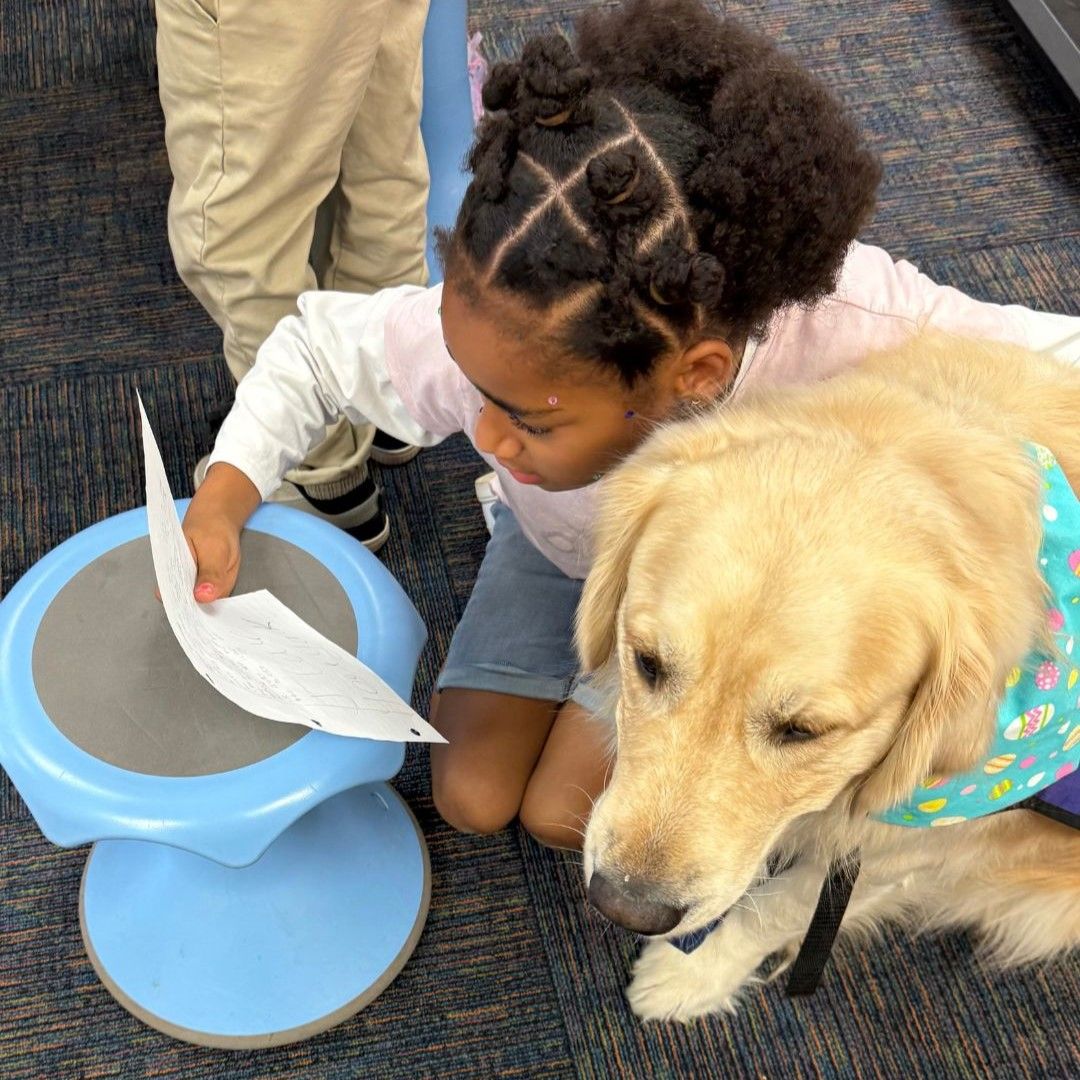
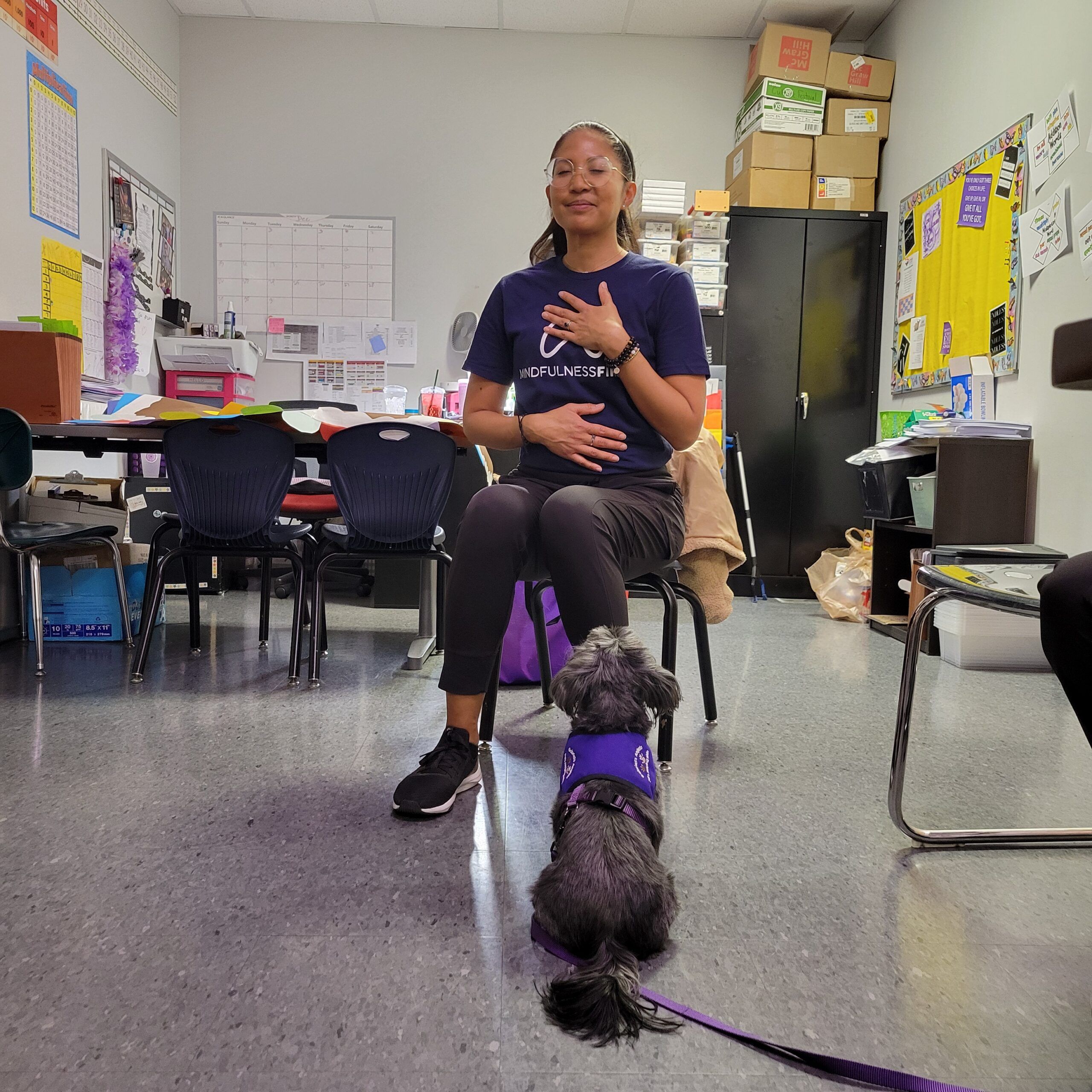

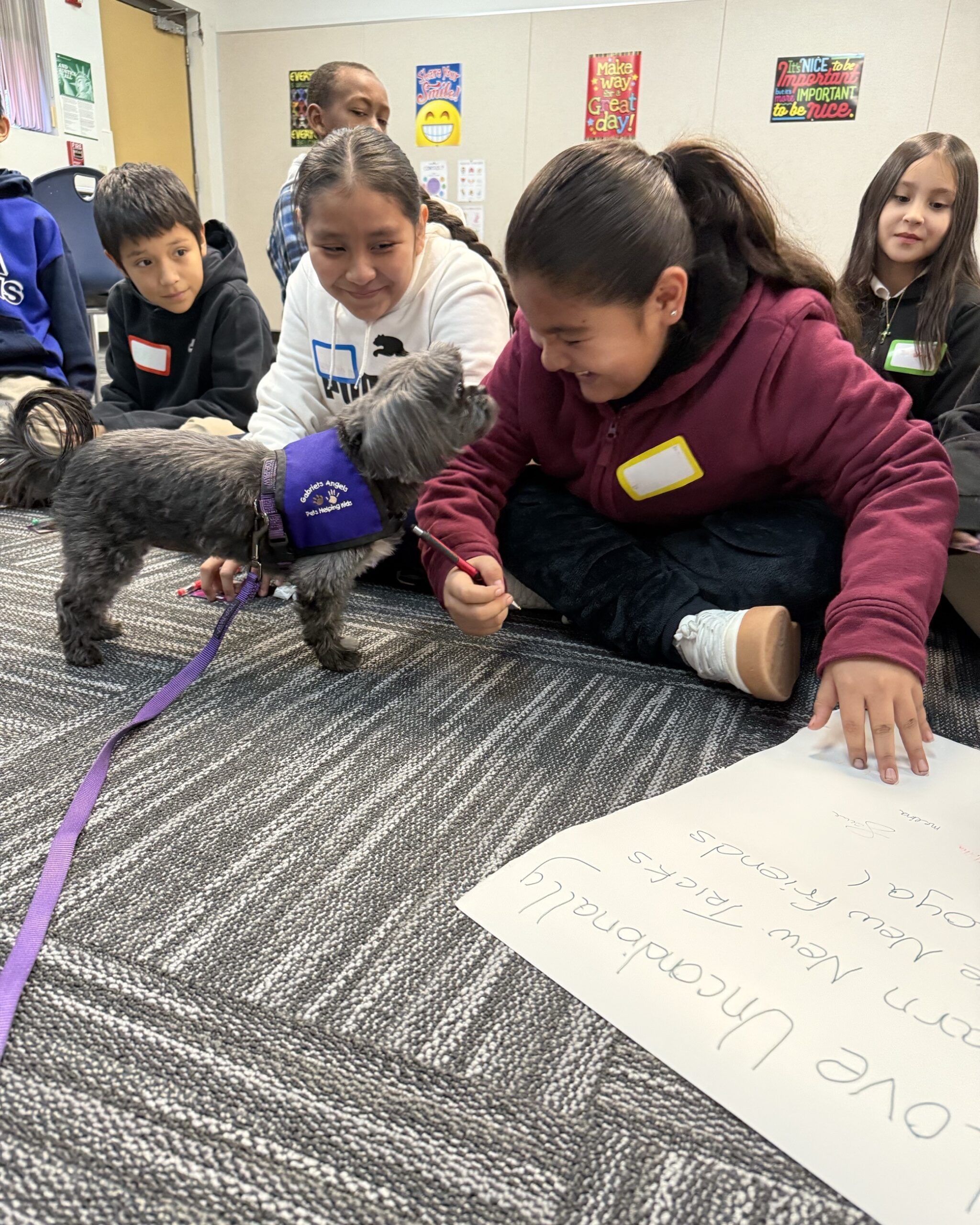
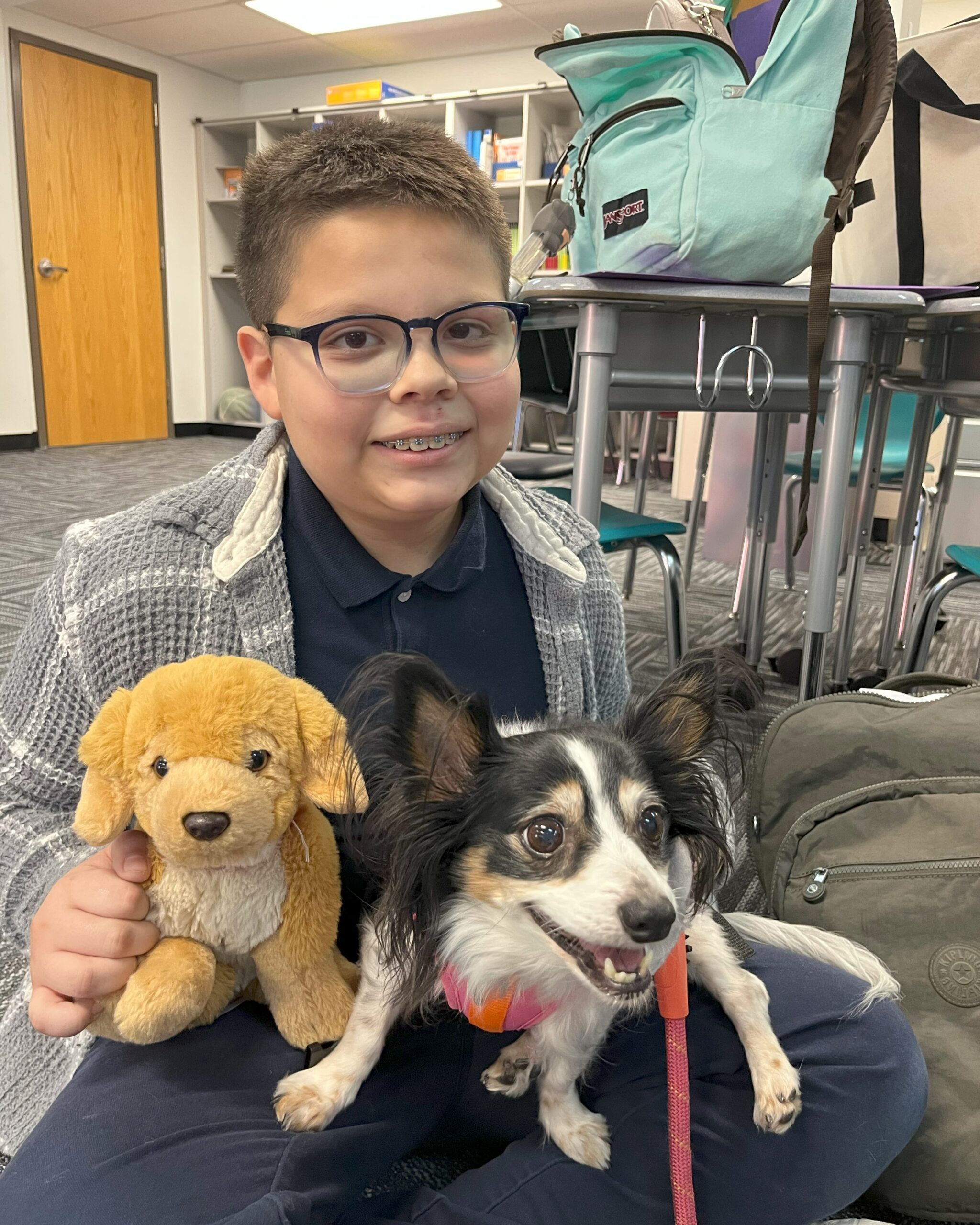
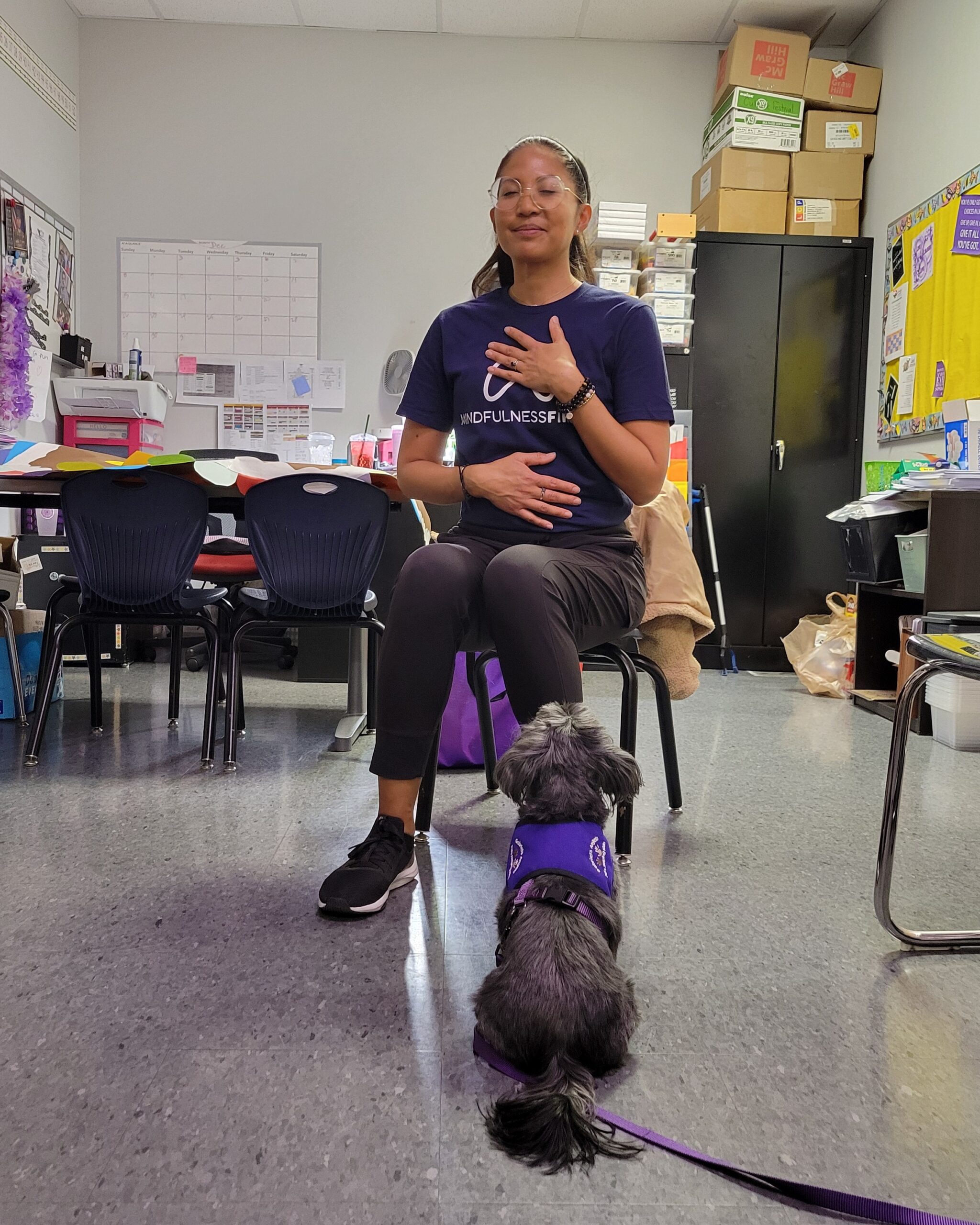
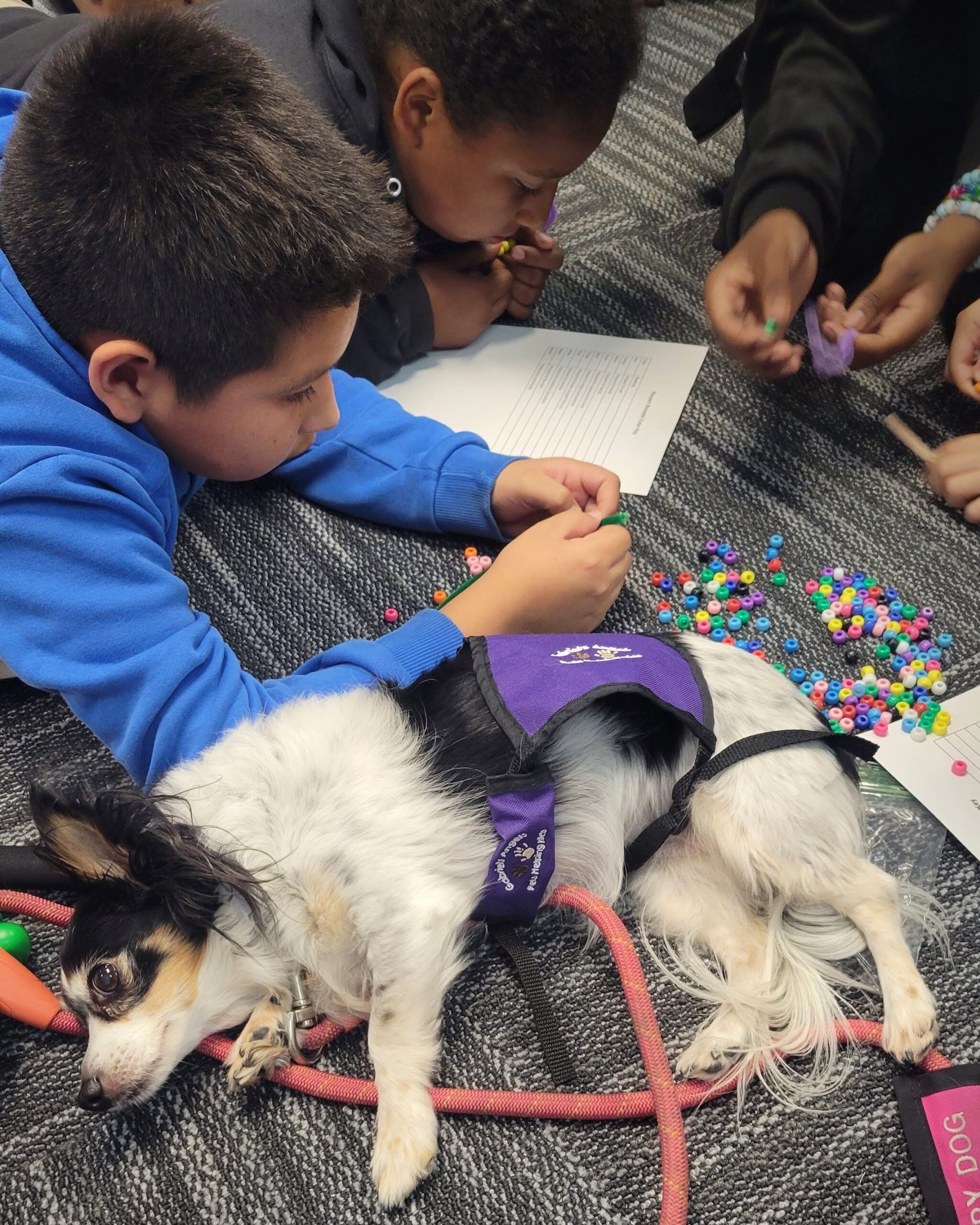
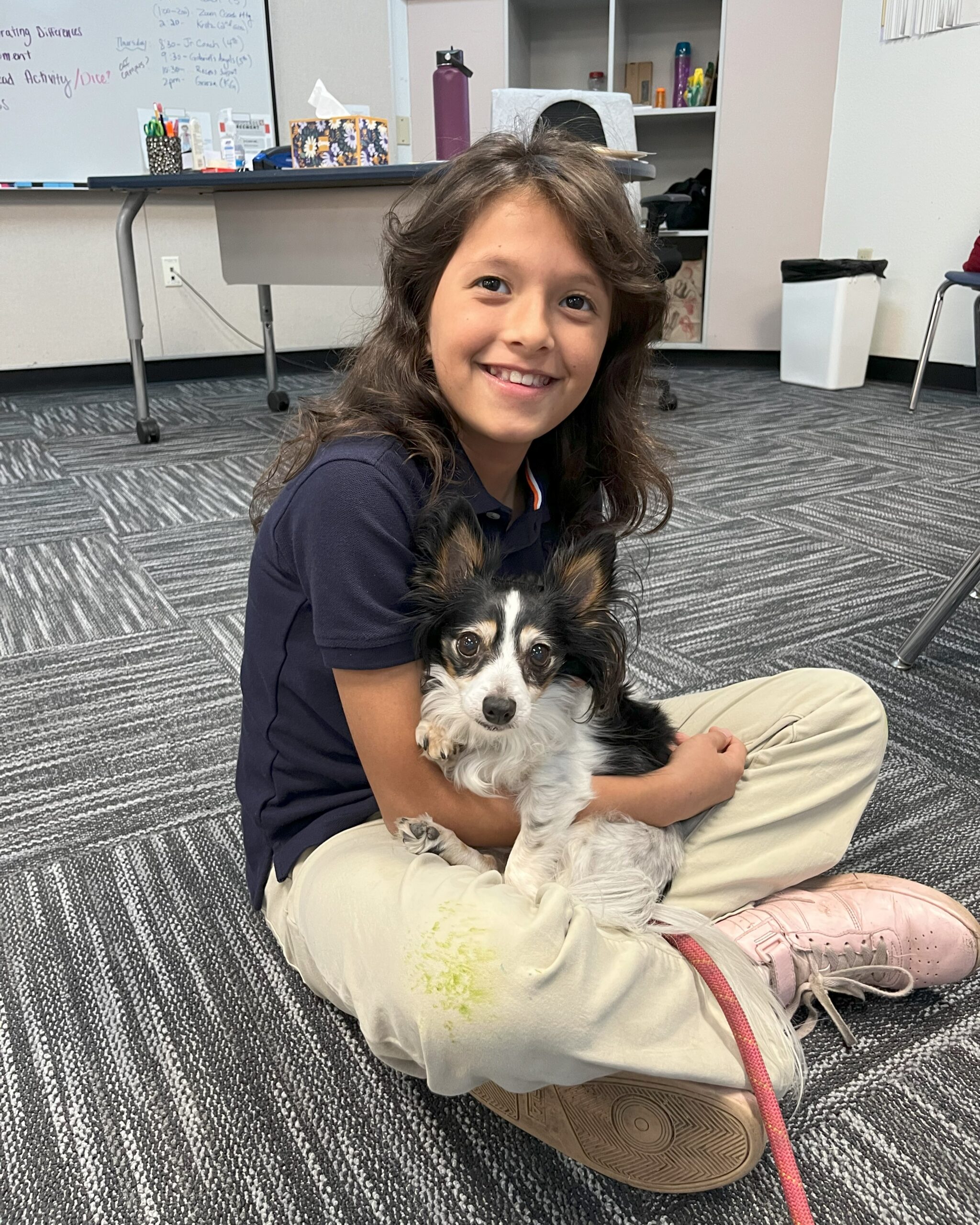

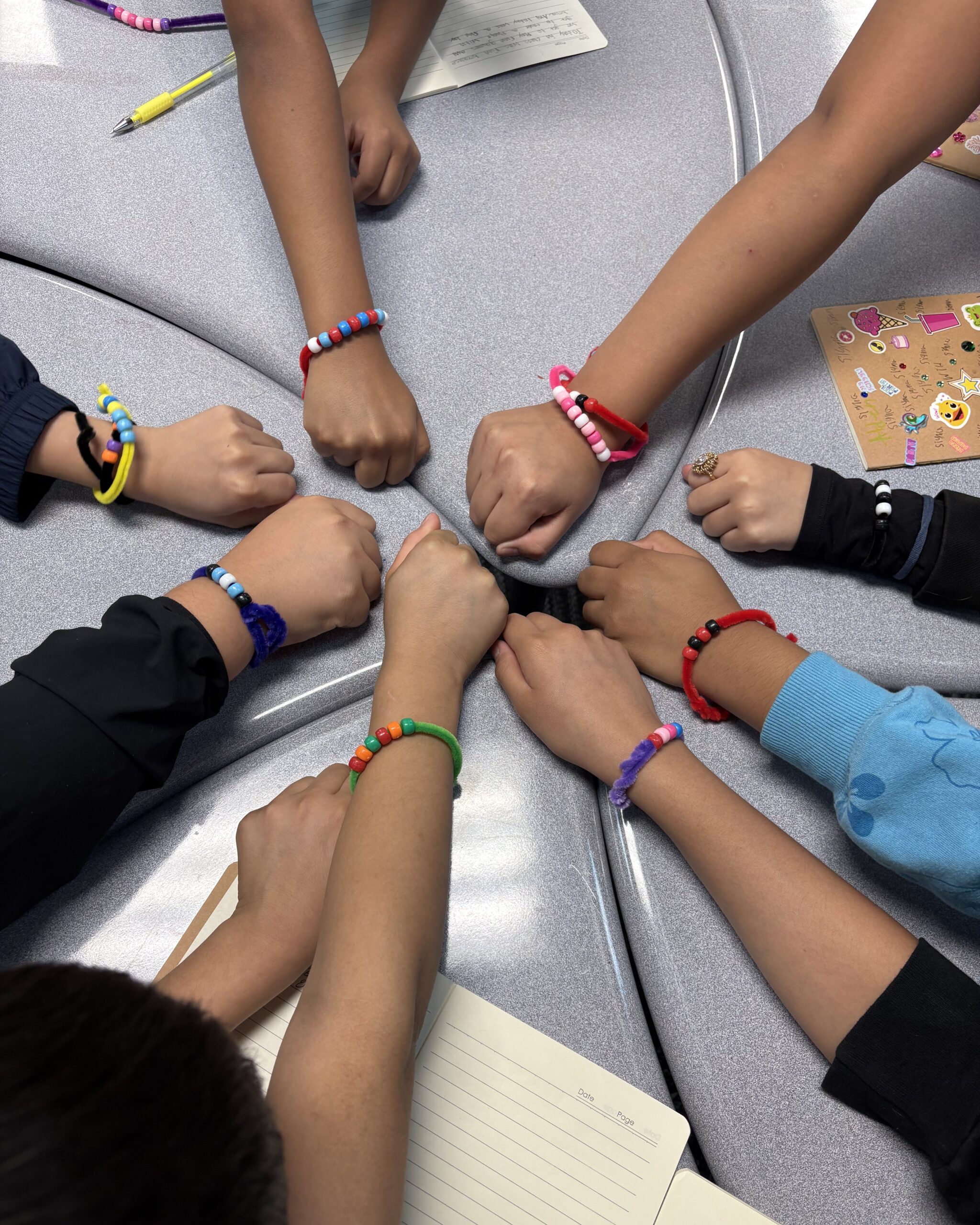
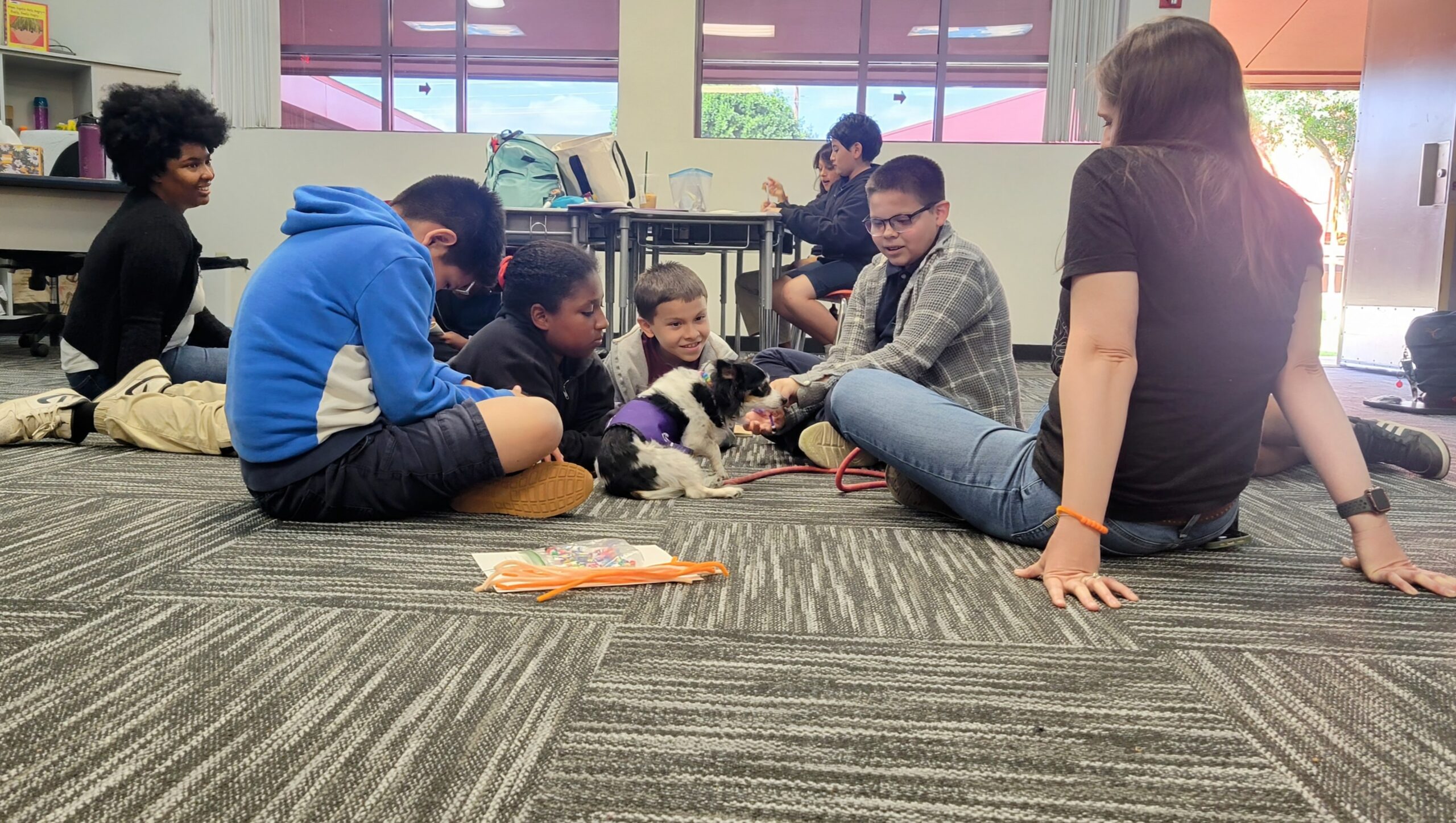

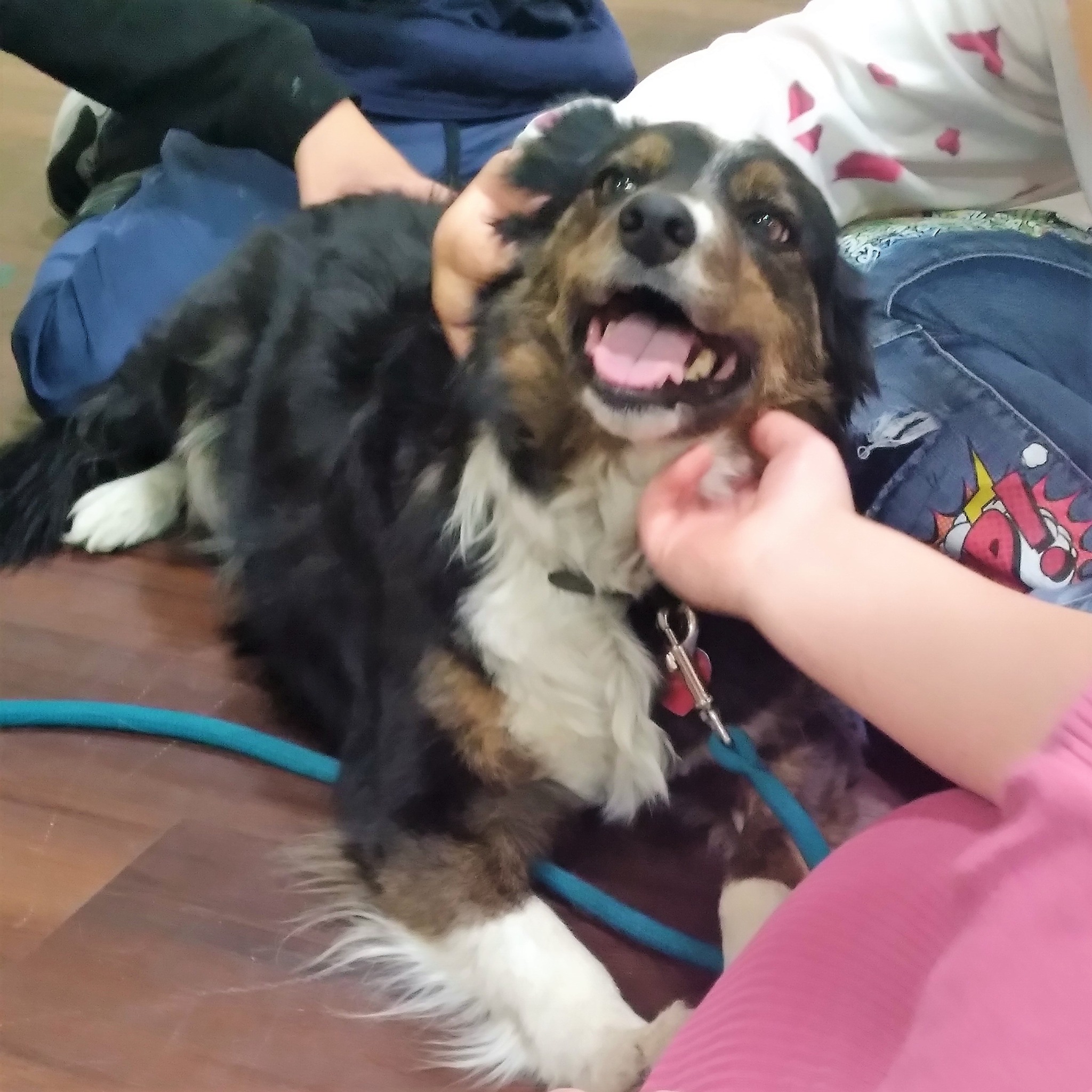
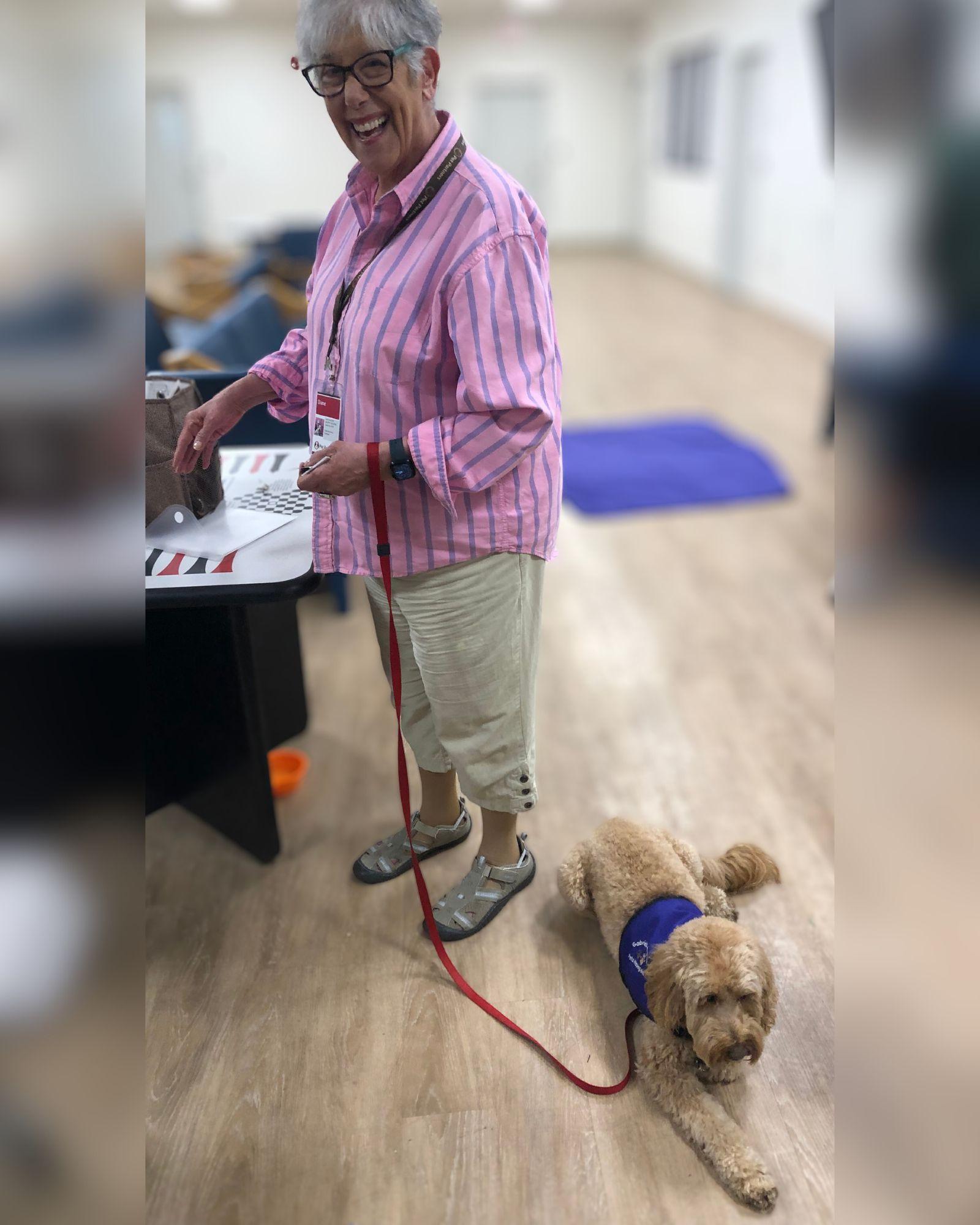

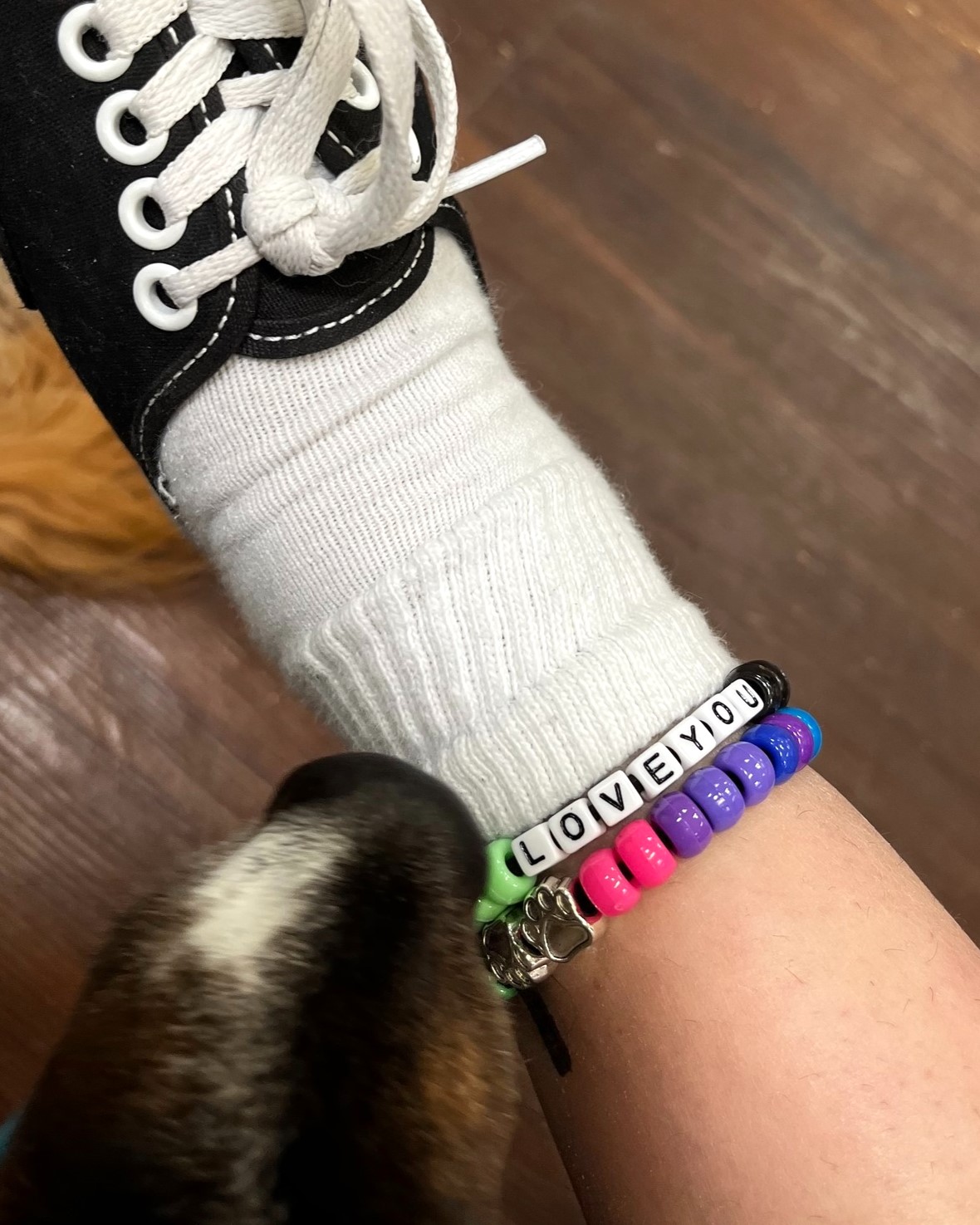
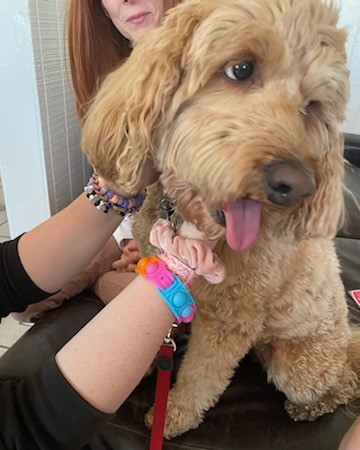


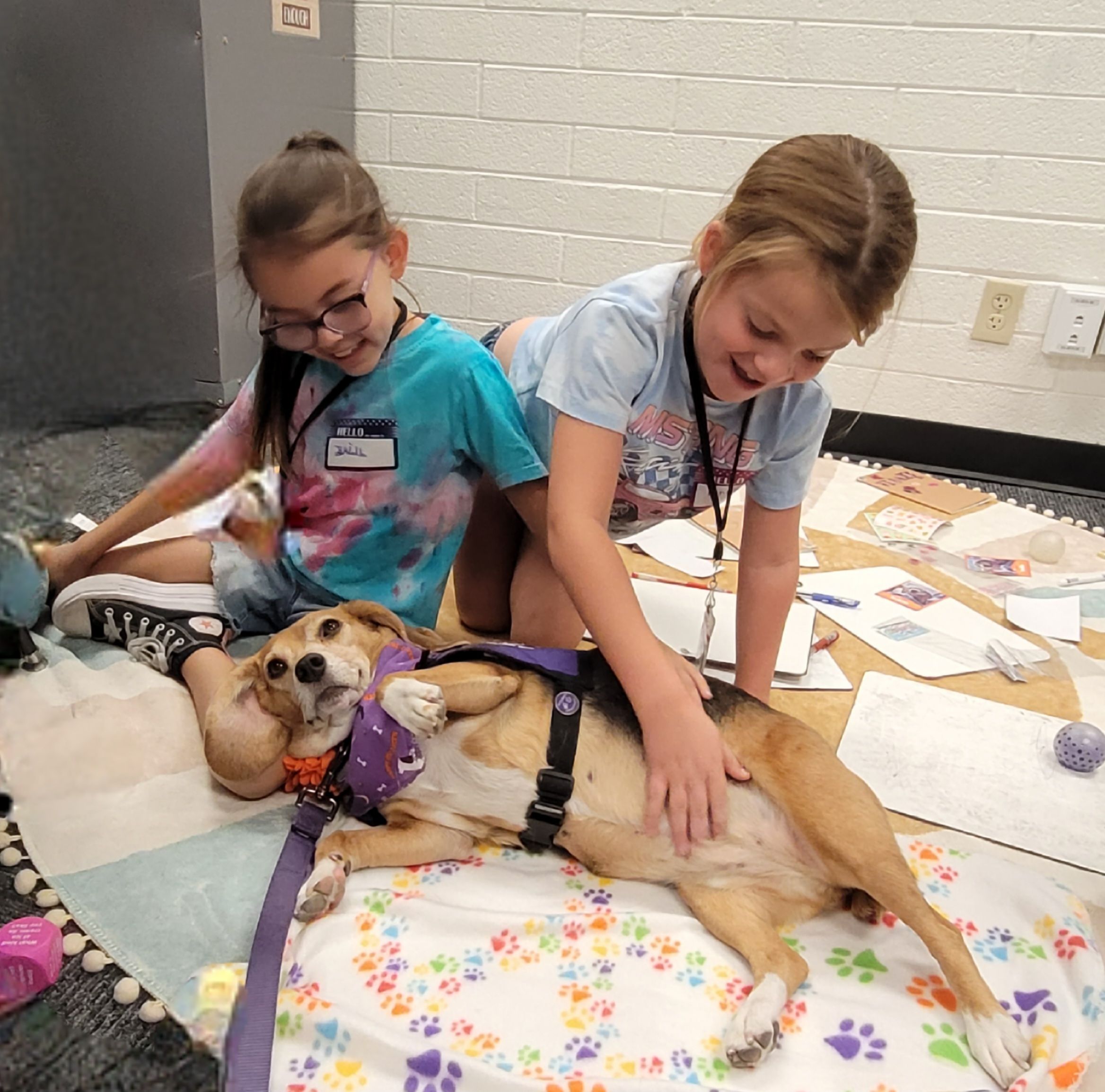
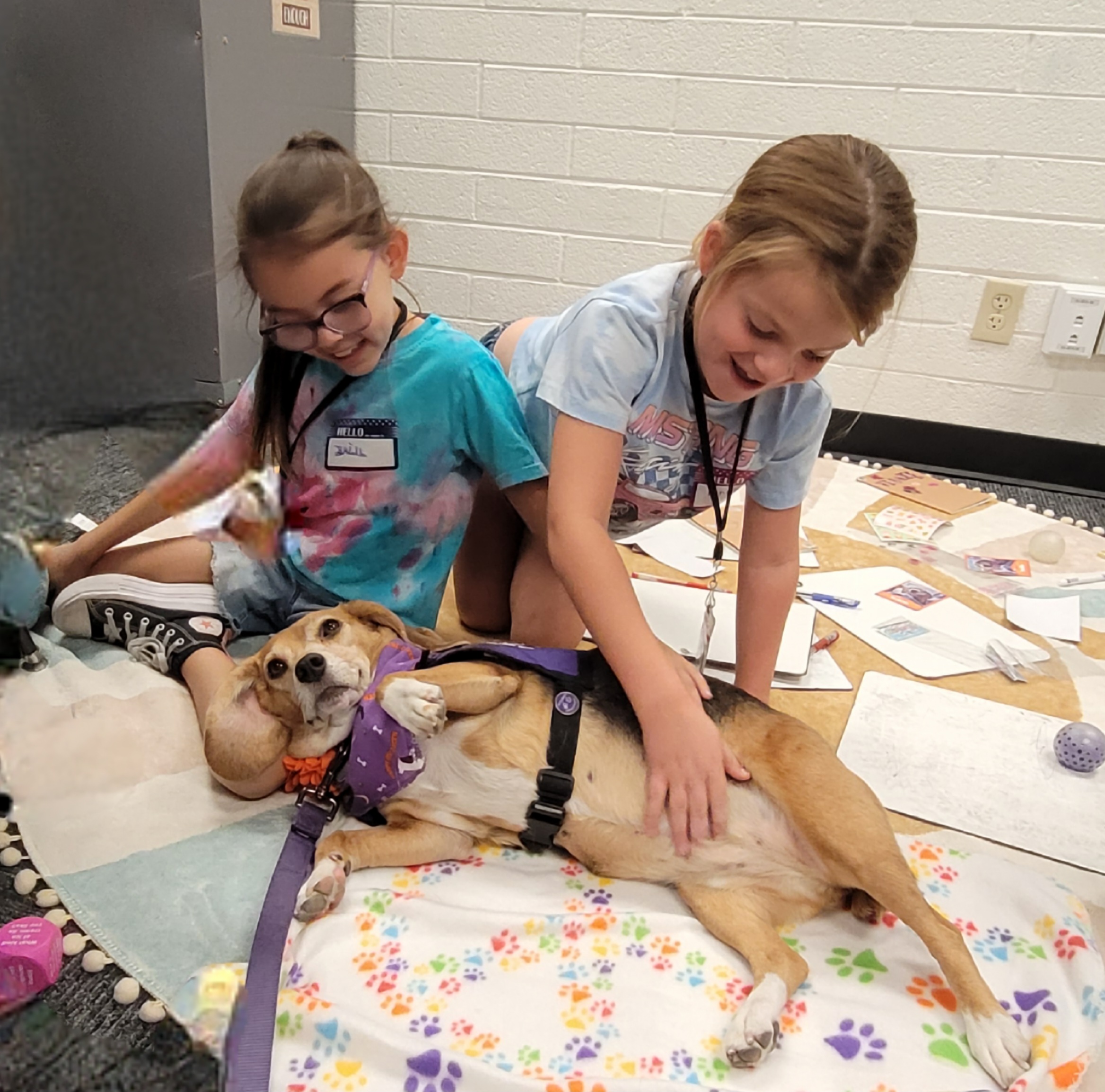
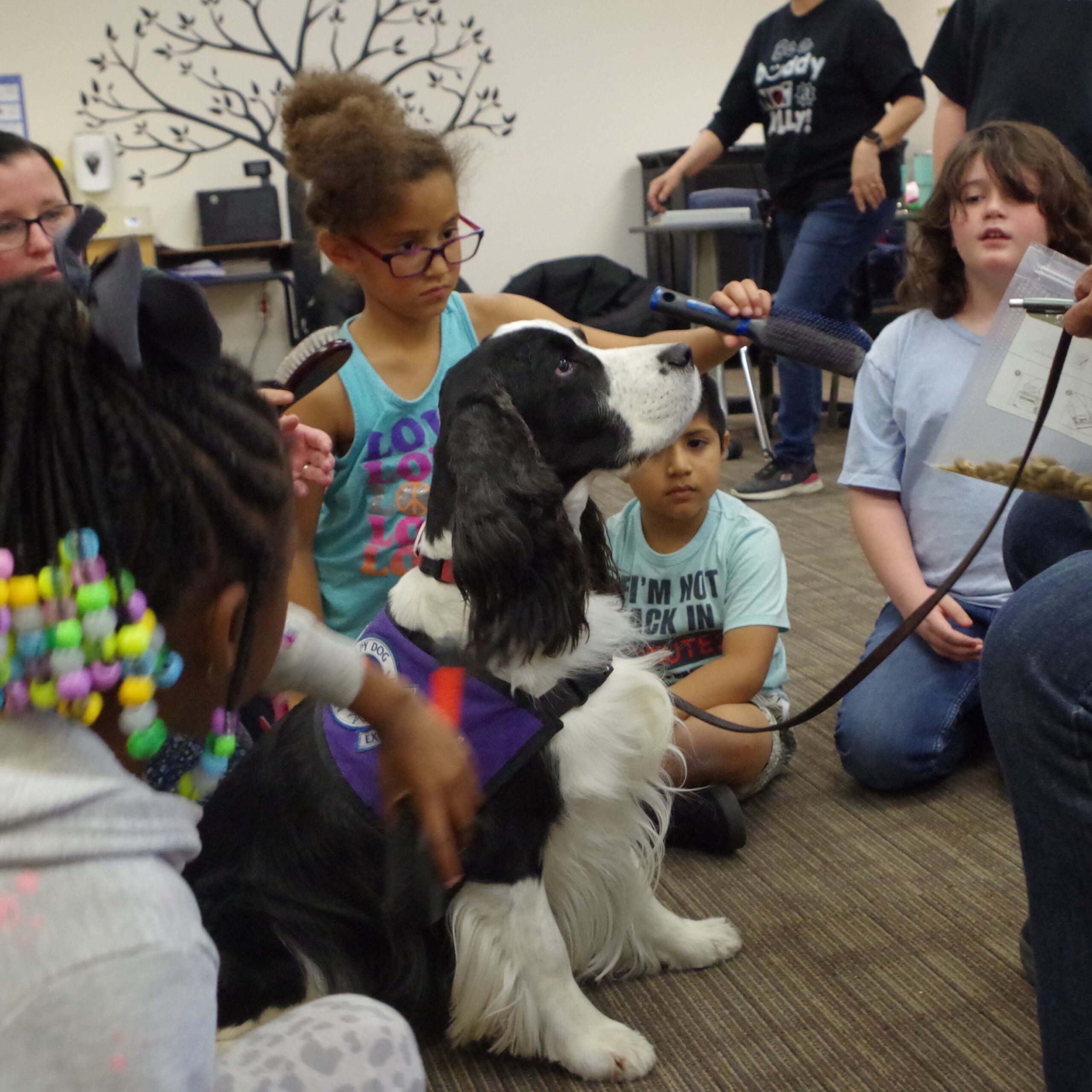






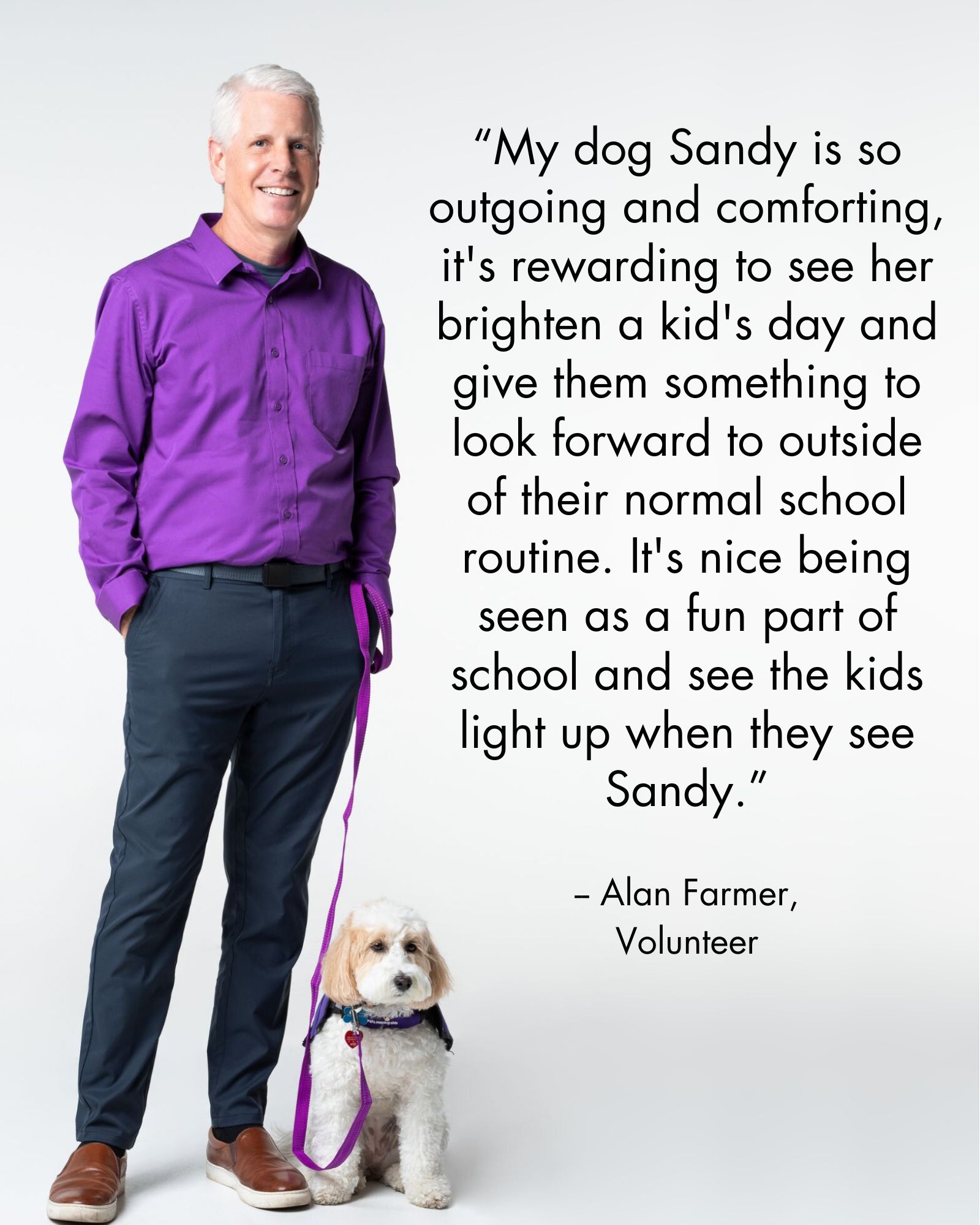
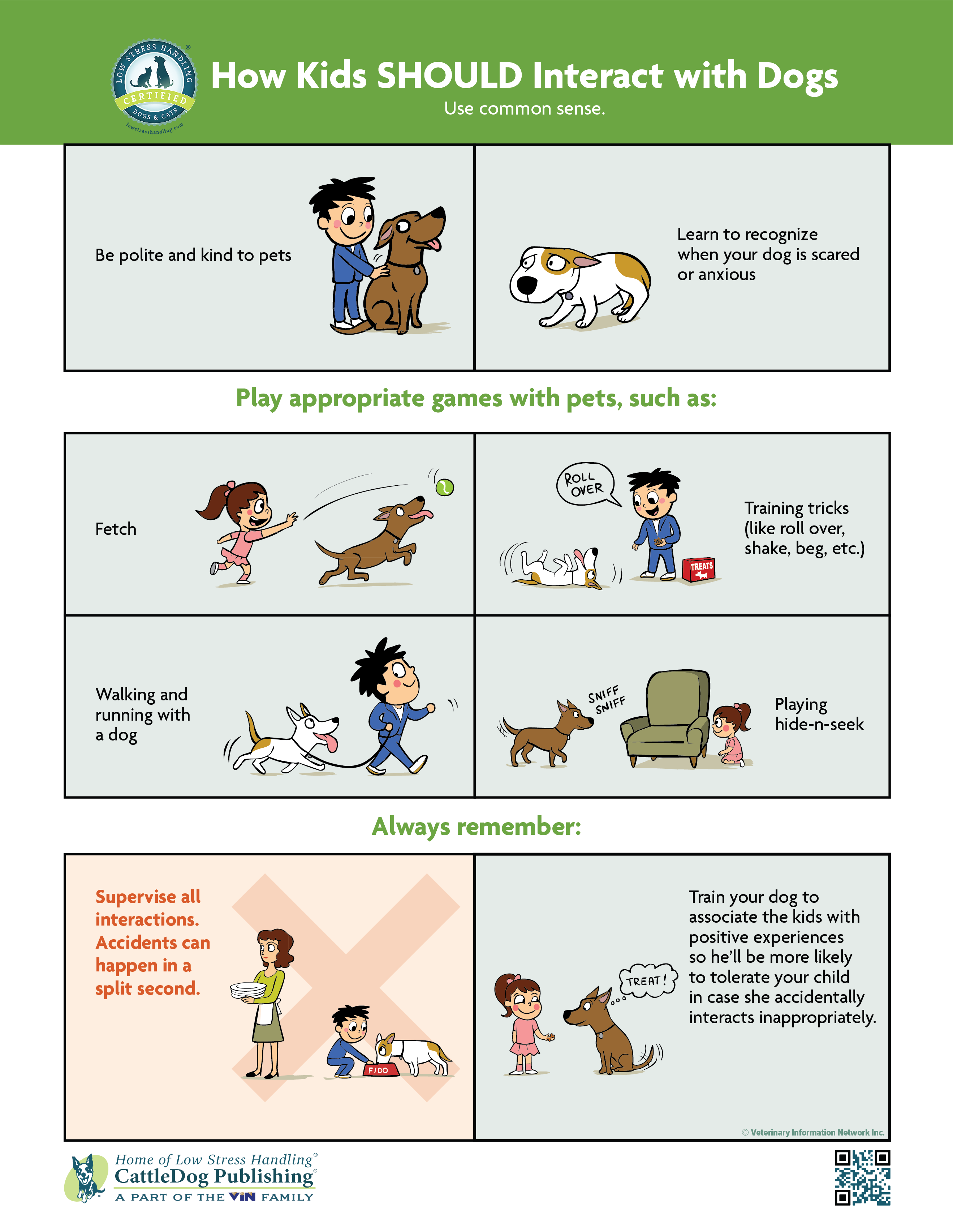
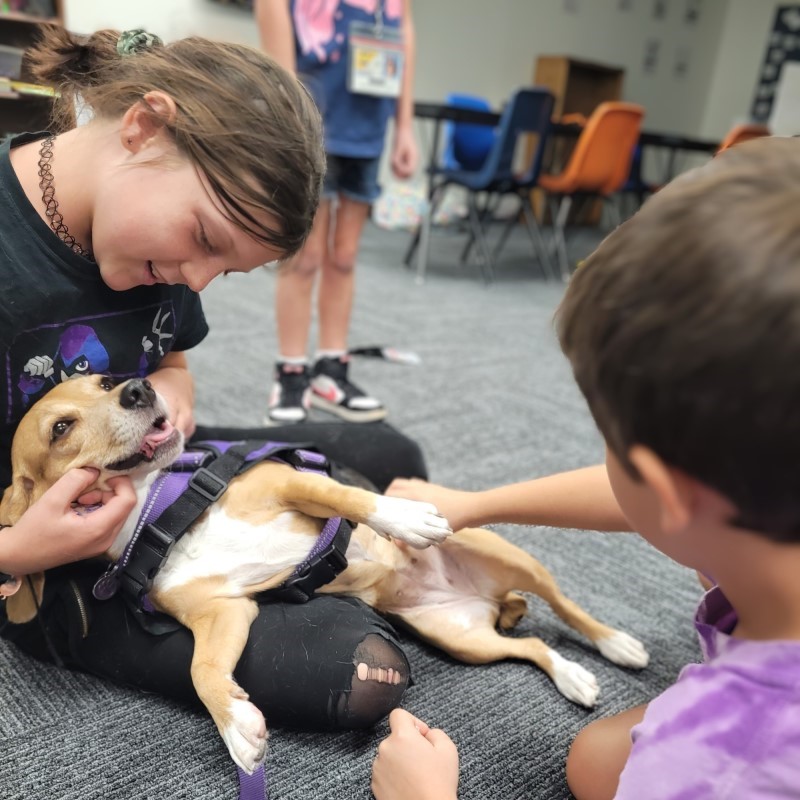 On top of already having a great temperament, the dogs you see in our pet therapy programs go through a lot of training and testing to earn their Therapy Dog Registration through nationally recognized certifiers.
On top of already having a great temperament, the dogs you see in our pet therapy programs go through a lot of training and testing to earn their Therapy Dog Registration through nationally recognized certifiers.  Common signs of stress or discomfort in dogs, like growling, bared teeth, or tightly tucked tail are usually well-known, but there are also more subtle indicators such as walking away to avoid interaction, “whale eyes” (when they widen and show the whites of their eyes), stiffened body, and stress yawning. Teaching kids to recognize these signs can help them know when to give a dog space.
Common signs of stress or discomfort in dogs, like growling, bared teeth, or tightly tucked tail are usually well-known, but there are also more subtle indicators such as walking away to avoid interaction, “whale eyes” (when they widen and show the whites of their eyes), stiffened body, and stress yawning. Teaching kids to recognize these signs can help them know when to give a dog space.


 We are grateful to partner with schools and other youth-serving organizations who appreciate the life-changing impact of pet therapy for the children in their care.
We are grateful to partner with schools and other youth-serving organizations who appreciate the life-changing impact of pet therapy for the children in their care. School Principal Shelly Richardson and staff surprised Kerry with the news by presenting her with flowers (and dog treats for Carmel!), and a letter inviting them to an awards ceremony to formally receive their recognition.
School Principal Shelly Richardson and staff surprised Kerry with the news by presenting her with flowers (and dog treats for Carmel!), and a letter inviting them to an awards ceremony to formally receive their recognition. At the CCUSD Awards Ceremony, the Superintendent read a wonderful write-up recognizing their dedication and the difference they’ve made in the lives of students and staff alike through their pet therapy work. Therapy Dog Carmel was the star of the show as she accompanied Kerry to the stage to accept their award.
At the CCUSD Awards Ceremony, the Superintendent read a wonderful write-up recognizing their dedication and the difference they’ve made in the lives of students and staff alike through their pet therapy work. Therapy Dog Carmel was the star of the show as she accompanied Kerry to the stage to accept their award.